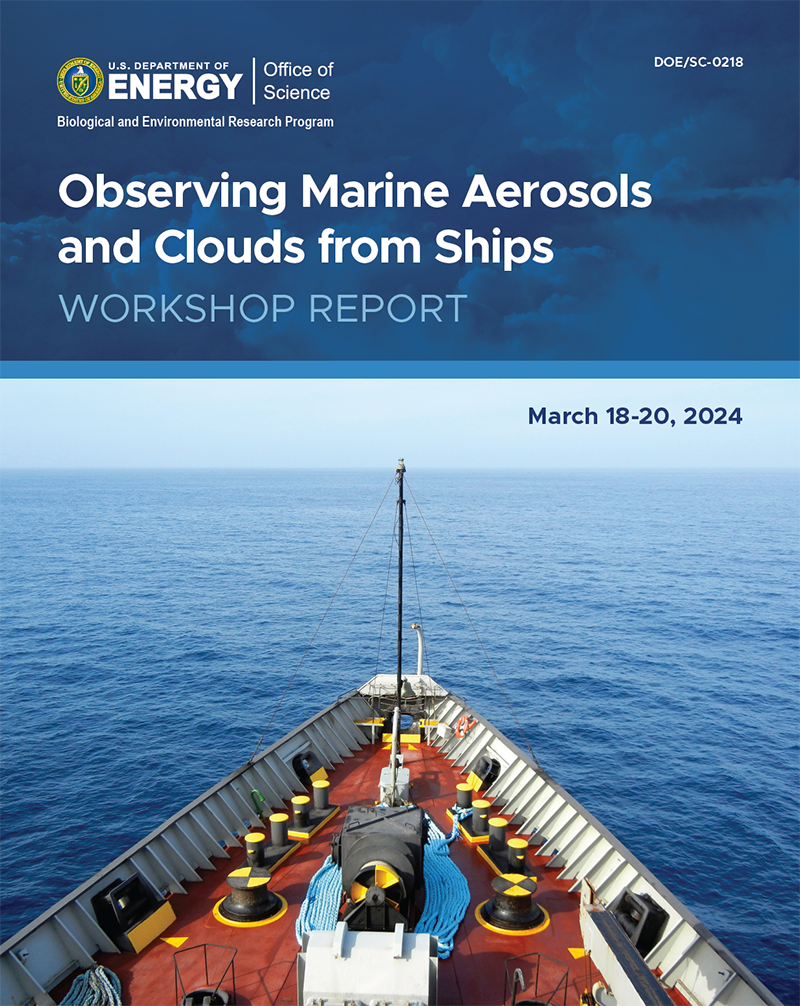Experts outline logistical challenges, instrumentation priorities, multi-agency coordination, and science questions

At a recent U.S. Department of Energy (DOE) workshop held virtually March 18-20, 2024, experts discussed the feasibility and scientific priorities of observing marine aerosols and clouds from commercial ships. An ensuing workshop report was published in June.
The workshop was organized by DOE’s Atmospheric System Research (ASR) Program Manager Shaima Nasiri and DOE’s Atmospheric Radiation Measurement (ARM) user facility Program Manager Sally McFarlane.
The workshop aimed to identify scientific priorities, logistical challenges, and opportunities for deploying shipborne instrumentation on commercial vessels.
“Overall,” says Nasiri, “the workshop provided valuable insights into the challenges and opportunities of observing marine aerosols and clouds from ships. Leveraging commercial ships as observational platforms could significantly expand the reach of shipborne observations and improve our understanding of Earth’s climate system.”
Key takeaways from the report include:
Logistical challenges: The workshop highlighted vital logistical challenges, including developing good relationships with shipping companies, instrument installation and maintenance in port, instrument location on the ship, data quality control, and legal issues.
Coordination with existing activities: Participants identified existing programs supported by other federal agencies that are conducting measurements of oceanic properties, surface meteorology, and greenhouse gases on commercial ships. Coordination with these programs would be valuable for a shipborne observations program.
High-priority instrumentation: Feasible measurements for unattended operation on ships include surface meteorology, aerosol size distribution, carbon monoxide mixing ratios, aerosol number concentration, aerosol optical properties, broadband radiation, ship position/navigation, cloud-base height, and liquid water path.
Scientific questions: The workshop identified several scientific research topics that could be addressed with shipborne measurements, including environmental controls on cloud properties, aerosol-cloud interactions, marine boundary-layer structure, aerosol variability in different ocean regions, and the direct radiative impacts of aerosols.
To learn more, read the report.
# # #This work was supported by the U.S. Department of Energy’s Office of Science, through the Biological and Environmental Research program as part of the Atmospheric System Research program.

